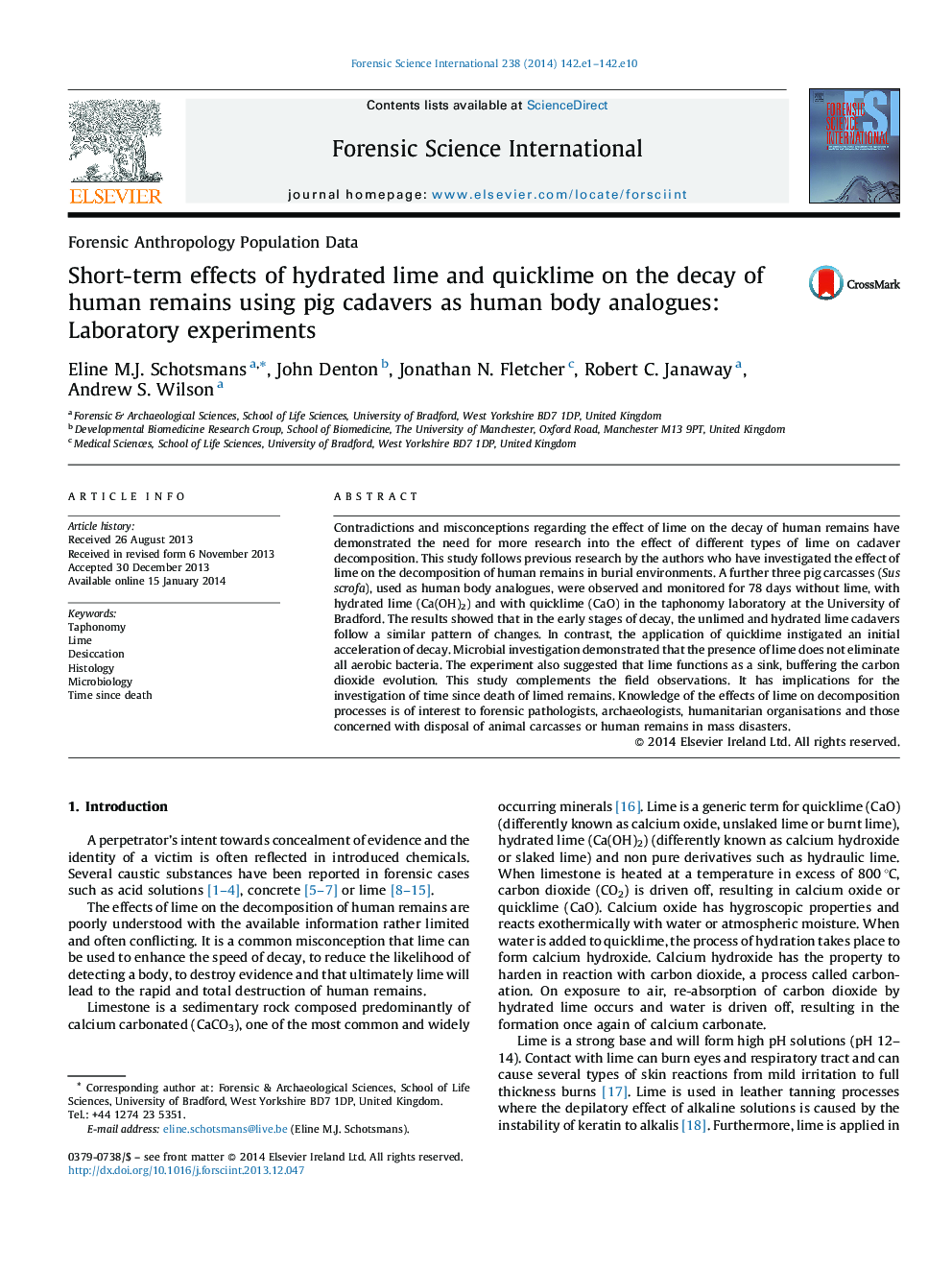| Article ID | Journal | Published Year | Pages | File Type |
|---|---|---|---|---|
| 95767 | Forensic Science International | 2014 | 10 Pages |
Abstract
Contradictions and misconceptions regarding the effect of lime on the decay of human remains have demonstrated the need for more research into the effect of different types of lime on cadaver decomposition. This study follows previous research by the authors who have investigated the effect of lime on the decomposition of human remains in burial environments. A further three pig carcasses (Sus scrofa), used as human body analogues, were observed and monitored for 78 days without lime, with hydrated lime (Ca(OH)2) and with quicklime (CaO) in the taphonomy laboratory at the University of Bradford. The results showed that in the early stages of decay, the unlimed and hydrated lime cadavers follow a similar pattern of changes. In contrast, the application of quicklime instigated an initial acceleration of decay. Microbial investigation demonstrated that the presence of lime does not eliminate all aerobic bacteria. The experiment also suggested that lime functions as a sink, buffering the carbon dioxide evolution. This study complements the field observations. It has implications for the investigation of time since death of limed remains. Knowledge of the effects of lime on decomposition processes is of interest to forensic pathologists, archaeologists, humanitarian organisations and those concerned with disposal of animal carcasses or human remains in mass disasters.
Related Topics
Physical Sciences and Engineering
Chemistry
Analytical Chemistry
Authors
Eline M.J. Schotsmans, John Denton, Jonathan N. Fletcher, Robert C. Janaway, Andrew S. Wilson,
